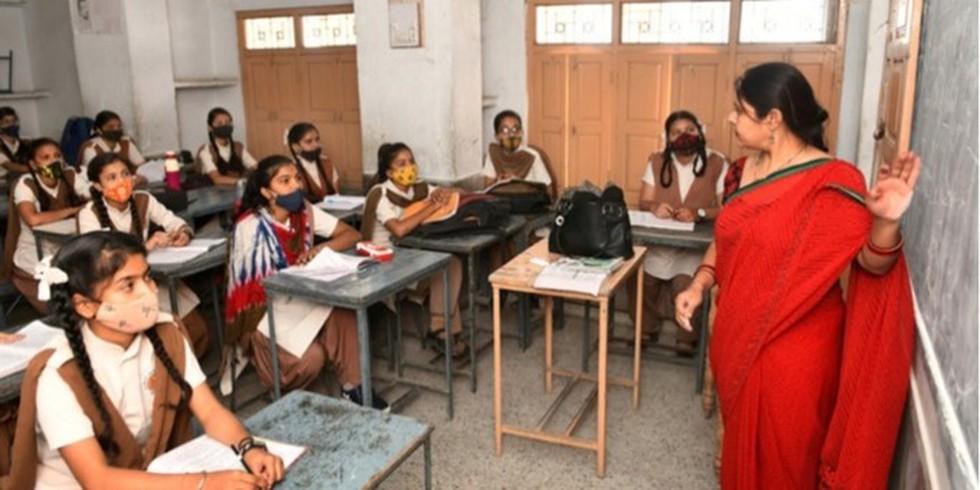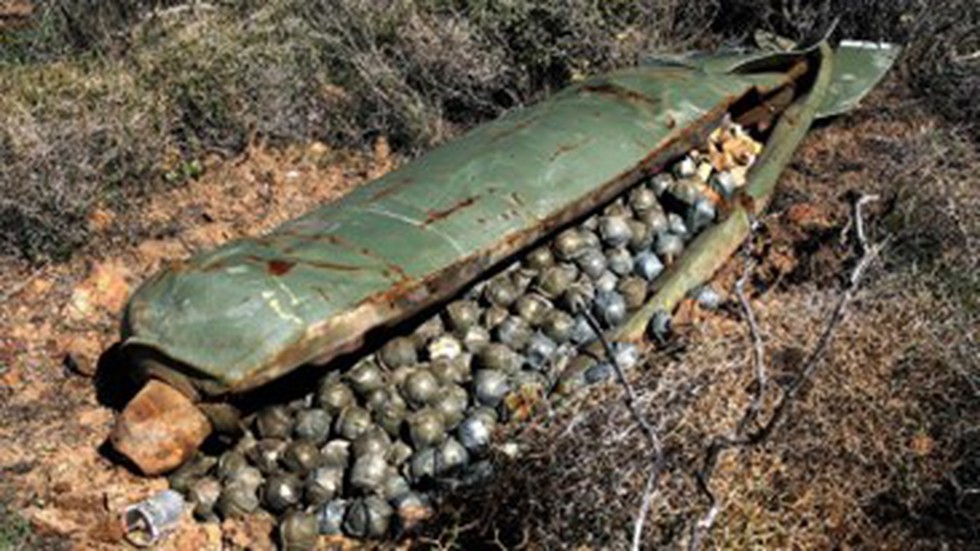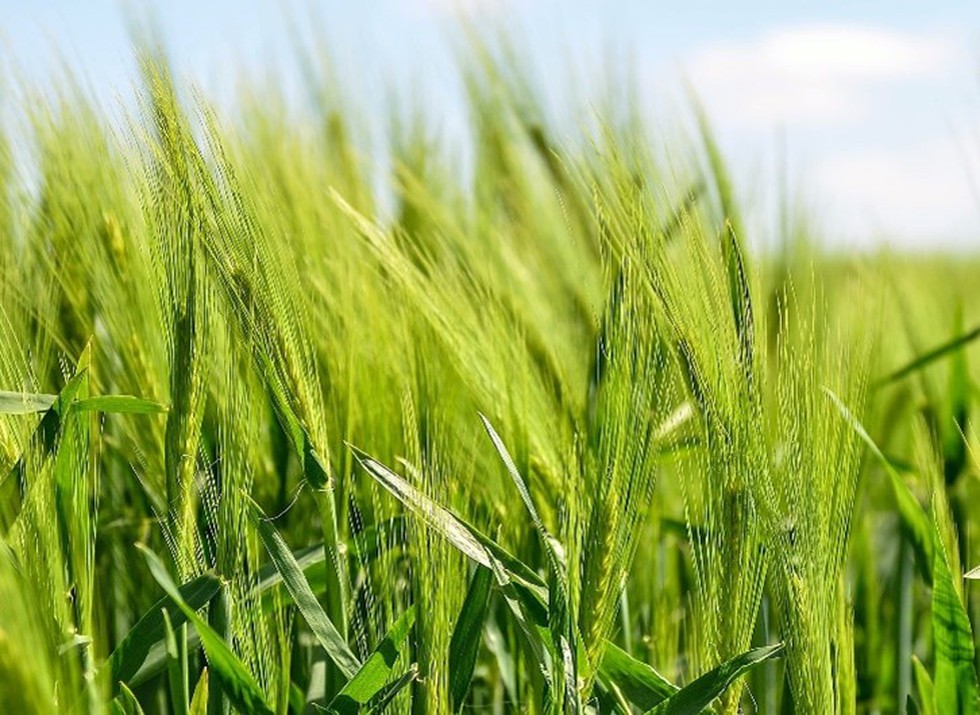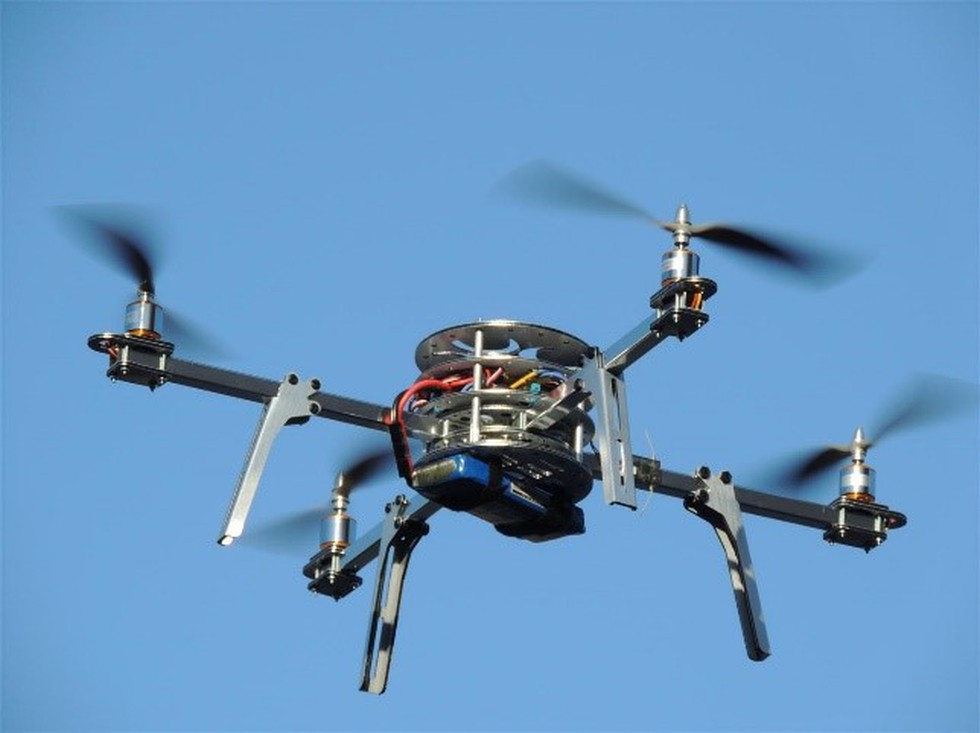
About Performance Grading Index for Districts (PGI-D):
- It assesses the performance of school education system at the district level by creating an index for comprehensive analysis.
- Based on the success of State PGI, 83-indicator based PGI for District (PGI-D) has been designed to grade the performance of all districts in school education.
- The data is filled by districts through online portal.
- It is expected to help the state education departments to identify gaps at the district level and improve their performance in a decentralized manner.
- The indicator-wise PGI score shows the areas where a district needs to improve.
- PGI-D report for 2018-19 and 2019-20 has been released so far, the current one is combined report for 2020-21 & 2021-22.
- The PGI-D structure comprises of total weightage of 600 points across 83 indicators, which are grouped under 6 categories, Outcomes, Effective Classroom Transaction, Infrastructure Facilities & Student’s Entitlements, School Safety & Child Protection, Digital Learning and Governance Process.
- These categories are further divided into 12 domains.
- PGI-D grades the districts into ten grades viz., Highest achievable Grade is Daksh, which is for Districts scoring more than 90% of the total points in that category or overall.
- The lowest grade in PGI-D is called Akanshi-3 which is for scores upto10% of the total points. Ultimate objective of PGI-D is to help the districts to priorities areas for intervention in school education and thus improve to reach the highest grade.
About PBW RS1:
- It contains high amylose starch content.
- Resistant starch (RS) won’t cause an immediate and rapid rise in glucose levels.
- The high amylose and resistant starch, instead, ensure that glucose is released more slowly into the bloodstream.
- Amylose starch content known to reduce risks of type-2 diabetes and cardiovascular diseases.
- Food prepared from its whole grain flour also have lower glycemic index.
What is Type 2 Diabetes?
- It is the condition in which the human body doesn’t use insulin welland can’t keep blood sugar at normal levels.
- It develops over many years and is usually diagnosed in adults (but more and more in children, teens, and young adults).
What is glycemic index?
- It is a rating system for foods containing carbohydrates.
- It shows how quickly each food affects your blood sugar (glucose) level when that food is eaten on its own.

About Cluster bombs:
- A cluster bomb is a type of weapon that is designed to disperse smaller bombs over a large area.
- They are also known as cluster munitions, with the smaller bombs referred to as submunitions or bomblets.
- They can be dropped from air or fired from ground/sea, dispersing dozens or hundreds of bomblets across a large area.
- These explosions pose a grave threat to anyone in the vicinity, causing death or severe injuries.
- Some bomblets fail to detonate immediately, leaving behind unexploded ordnance that can harm or kill people for years to come
- The use of cluster bombs has been widely condemned internationally.
- Over 100 countries have ratified the Convention on Cluster Munitions.
Key Facts about Convention on Cluster Munitions
- It was adopted in Dublin on 30 May 2008 and opened for signature in Oslo on 3 December the same year.
- It prohibits all use, stockpiling, production and transfer of cluster munitions.
- Separate articles in the Convention concern destruction of stockpiles, clearance of contaminated areas, assistance to victims, submission of transparency reports, and adoption of domestic legislation.
- The Convention became binding international law when it entered into force on 1 August 2010.
- Till date a total of 123 States have joined the Convention – 111 States Parties and 12 Signatories.
- India is not a signatory to this convention.
About One District One Product (ODOP) programme:
- It was launched by the Ministry of Food Processing Industries in 2018.
- Objective: To help districts reach their full potential, foster economic and socio-cultural growth, and create employment opportunities, especially, in rural areas.
- This initiative aims to turn every district in India, into an export hub through promotion of the product in which the district specialises.
- The initiative plans to accomplish this by scaling manufacturing, supporting local businesses, finding potential foreign customers and so on, thus helping to achieve the ‘Atmanirbhar Bharat’ vision.
- The ODOP Initiative has identified a total of 1102 products from 761 districts across the country.
- This initiative is carried out with the ‘Districts as Exports Hub’ initiative by the Directorate General of Foreign Trade (DGFT), Department of Commerce.
What is the process?
- Under the ODOP initiative, all products have been selected by States/UTs by taking into consideration the existing ecosystem on the ground, products identified under Districts as Export Hubs (DEH), and GI-tagged products.
- The finalized list is communicated to the Department for Promotion of Industry and Internal Trade (DPIIT) by the relevant Department of States/UTs.

About Palamu Tiger Reserve:
- It is located in the Chhota Nagpur plateau region of Jharkhand.
- The reserve forms a part of the Betla National Park.
- It is one of the first 9 tiger reserves created in the country at the inception of ‘Project Tiger’.
- It is the first reserve in the world in which a tiger census was carried out as a pugmark count, as early as 1932 under the supervision of J.W. Nicholson
- Three rivers namely North Koyal, Auranga and Burha flow through the valleys.
- The area is draught drone with Burha being the only perennial river.
- The Reserve is very rich in minerals like Bauxite and Coal.
- Vegetation:
- It is primarily dominated by Northern Tropical Dry Deciduous, Sal Forest and its associates.
- Smaller patches of Northern tropical Moist Deciduous forests exist too in the Reserve.
- Flora: Shorea robusta, Acacia catechu, Madhuca indica, Terminalia tomentosa, Butea monosperma, Pterocarpus marsupium, Anogeisus latifolia, Indigofera pulchela etc.
- Fauna: Some keystone and principal species found in the reserve include Tiger, Asiatic Elephant, Leopard, Grey wolf, Wild dog, Gaur, Sloth bear and four horned antelope.
Key facts about Cheetal
- The spotted deer or chital is the most common deer species in Indian forests.
- They live in dense forests, forested valleys and also prefer open grasslands, savannas, and plantations.
- Conservation status
- IUCN: Least concern

About Protection of Plant Varieties and Farmers' Rights Authority:
- It is a Statutory body created by an act of Parliament.
- It works under the Department of Agriculture, Cooperation and Farmers Welfare, Ministry of Agriculture and Farmers Welfare.
- Formation:
- In order to provide for the establishment of an effective system for the protection of plant varieties, the rights of farmers and plant breeders and to encourage the development of new varieties of plants, the of India enacted “The Protection of Plant Varieties and Farmers' Rights (PPV&FR) Act, 2001” adopting sui generis system.
- The legislation recognizes the contributions of both commercial plant breeders and farmers in plant breeding activity and also provides to implement TRIPs in a way that supports the specific socio-economic interests of all the stakeholders including private, public sectors and research institutions, as well as resource-constrained farmers.
- To implement the provisions of the Act, the established the Protection of Plant Varieties and Farmers' Rights Authority on 11 November, 2005.
- Structure:
- The Chairperson is the Chief Executive of the Authority.
- Besides the Chairperson, the Authority has 15 members, as notified by the Government of India (GOI).
- Eight of them are ex-officio members representing various Departments/ Ministries, three from SAUs and the State Governments, one representative each for farmers, tribal organization, seed industry and women organization associated with agricultural activities are nominated by the Central Government.
- The Registrar General is the ex-officio Member Secretary of the Authority.
- General Functions of the Authority:
- Registration of new plant varieties, essentially derived varieties (EDV), extant varieties;
- Developing DUS (Distinctiveness, Uniformity and Stability) test guidelines for new plant species;
- Developing characterization and documentation of varieties registered;
- Compulsory cataloguing facilities for all variety of plants;
- Documentation, indexing and cataloguing of farmers' varieties;
- Recognizing and rewarding farmers, community of farmers, particularly tribal and rural community engaged in conservation and improvement;
- Preservation of plant genetic resources of economic plants and their wild relatives;
- Maintenance of the National Register of Plant Varieties and
- Maintenance of National Gene Bank.

About Quadcopters:
- It is an unmanned aerial vehicle (UAV) or drone with four rotors, each with a motor and propeller.
- A quadcopter can be manually controlled or can be autonomous.
- It's also called a quadrotor helicopter or quadrotor.
- It belongs to a more general class of aerial vehicles called multicopter or multirotor.
- Principle:
- The main principle behind the flight of a quadcopter is Newton's Third Law of motion, which states that for every action there's an equal and opposite reaction.
- A quadcopter's propellers push air downwards. This causes an opposite reaction called thrust that pushes the quadcopter upwards against gravity.
- Air movement comes from Bernoulli's Principle, with larger propeller blades and faster rotation creating more thrust.
- When the propellers rotate (for example clockwise), the quadcopter will tend to rotate anti-clockwise. Rotational force is called torque. Helicopters solve this by using a tail rotor.
- Quadcopters solve this by driving two diagonal propellers clockwise and the other two anti-clockwise. Thus, torque from one pair cancel that of the other.
- When each diagonal pair of propellers rotate in opposite directions, their thrusts will be in opposite directions. The quadcopter will not be able to lift up or fly.
- This is solved by having the blades of each diagonal pair of propellers shaped as mirror images of the other pair. Effectively, all propellers will push air downwards regardless of the direction of rotation.
- Applications:
- They provide stable flight performance, making them ideal for surveillance and aerial photography.
- Quadcopters, after being airborne, have the ability to hover in place, whereas fixed-wing aerial drones have to be on the move constantly.
- Other application areas include delivery, land surveys, crop assessment, weather broadcasting, and more.

About Quantum Computing:
- It is an area of computer science that uses the principles of quantum theory.
- Quantum theory explains the behaviour of energy and material on the atomic and subatomic levels.
- Quantum computers have the capability to sift through huge numbers of possibilities and extract potential solutions to complex problems and challenges.
- How does it work?
- Where classical computers store information as bits with either 0s or 1s, quantum computers use qubits.
- While classical bits always represent either one or zero, a qubit can be in a superposition of one and zero simultaneously until its state is measured.
- In addition, the states of multiple qubits can be entangled, meaning that they are linked quantum mechanically to each other.
- Qubits can be made by manipulating atoms, electrically charged atoms called ions, or electrons, or by nanoengineering so-called artificial atoms, such as circuits of superconducting qubits, using a printing method called lithography.
What is Superposition and Entanglement?
- They are two features of quantum physics on which quantum computing is based.
- They empower quantum computers to handle operations at speeds exponentially higher than conventional computers and with much less energy consumption.
- Superposition:
- A qubit places the quantum information that it contains into a state of superposition.
- This refers to a combination of all possible configurations of the qubit.
- Groups of qubits in superposition can create complex, multidimensional computational spaces.
- Complex problems can be represented in new ways in these spaces.
- Entanglement:
- Pairs of qubits can be made to become entangled.
- This means that the two qubits then exist in a single state.
- In such a state, changing one qubit directly affects the other in a manner that's predictable.
- Quantum algorithms are designed to take advantage of this relationship to solve complex problems.
- While doubling the number of bits in a classical computer doubles its processing power, adding qubits results in an exponential upswing in computing power and ability.

About Total Expense Ratio (TER):
- TER is a measure of the total costs associated with managing and operating an investment fund, such as a mutual fund.
- These costs consist primarily of management fees and additional expenses, such as trading fees, legal fees, auditor fees, and other operational expenses.
- The total cost of the fund is divided by the fund’s total assets to arrive at a percentage amount, which represents the TER.
- TER is also known as the net expense ratio or after reimbursement expense ratio.
- Why is TER important?
- It is used by investors to compare the costs of the scheme with its peers and also in relation to the returns available from that scheme.
- It is a key element in making an investment choice, as those funds which consistently show a high TER may not provide high returns, since high expenses tend to erode the returns generated.
- For example, if a fund generates a return of 7% for the year but has a TER of 4%, then the 7% gain is greatly diminished to roughly 3%.
- How is TER Calculated?
- Total expense ratio = (Total Fund Costs / Total Fund Assets)*100.
- Expenses Associated with Operating a Fund: TER is the measure of all the expenses associated with running a scheme. These can include:
- Management fees, probably the single largest item in the TER of a fund. These fees cover items such as fund manager salaries and research fees.
- Brokerages and taxes in transacting the securities of the scheme.
- Fees paid to trustees, registrar and transfer agents, custodians, personnel of the trustee and Asset Management Company, etc.
- Legal and accountancy fees;
- Sales and marketing expenses.
- Any other operational expenses like rent, electricity, communication, etc. in proportion to the assets of the scheme.

About Yamuna River:
- Yamuna River (also known as Jumna), is the major tributary of the Ganges River.
- Origin: It rises in the high Himalaya, in the Yamunotri Glacier, at the height of 4,421 meters.
- Course:
- The 1,376 km long Yamuna flows solely through India, crossing three states: Uttarakhand, Uttar Pradesh and Haryana.
- After rising in the high Himalayas, it flows in a southerly direction swiftly through the Himalayan foothills and, exiting Uttarakhand, onto the Indo-Gangetic Plain, along the border between Uttar Pradesh and Haryana state to the west. The Eastern and Western Yamuna canals are fed from the river at that point.
- The Yamuna then passes Delhi, where it feeds the Agra Canal.
- South of Delhi, and now wholly within Uttar Pradesh, it turns south-eastward.
- Near Prayag Raj (Allahabad), after a course of about 855 miles (1,376 km), the Yamuna joins the Ganges (Ganga) River. The confluence of the two rivers is an especially sacred place to Hindus and is the site of annual festivals as well as the Kumbh Mela, which is held every 12 years.
- Tributaries:
- Near Dehradun, the capital city of Uttarakhand, the Yamuna is joined by its biggest tributary, the Tons River.
- The Chambal River is Yamuna’s biggest tributary on the right.
- Other important tributaries of the Yamuna include the Hindon, Sarda and Giri river on the right and Betwa and Sindh on the left.


.png)
.png)
.png)
























































































































































.png)
.png)
.png)
.png)
.png)


.png)
.png)
.png)





.png)
.png)






.png)
.png)
.png)
.png)
.png)
.png)
.png)
.png)
.png)

.png)







.png)
.png)


.png)
.png)
.png)


.png)

.png)
.png)





.jpg)

.png)
.png)


.png)

.png)
.png)
.png)

.jpg)

.jpg)


.png)

.png)
.png)
.png)
.png)
.png)
.png)
.png)
.png)
.png)
.png)




.png)

.png)





.png)
.png)
.png)
.png)
.png)
.png)
.png)
.jpg)
.jpg)

.png)
.png)
.png)
.png)
.png)
.png)
.png)
.png)
.png)
.png)
.png)
.png)
.png)
.png)
.png)
.png)
.png)
.png)
.png)
.png)
.png)
.png)



.png)
.png)

.jpg)
.jpg)


.jpg)
.jpg)
.jpg)
.jpg)
.jpg)

.jpg)








.jpg)
.jpg)
.jpg)
.jpg)
.jpg)

















.jpg)
.jpg)







.jpg)


















.jpg)
.jpg)






























































































.jpg)
.jpg)


























.jpg)

.jpg)










.jpg)








.jpg)




.jpg)










.jpg)


















.jpg)












































.jpg)














.jpg)
.jpg)
.jpg)





.jpg)

.jpg)
.jpg)





































































.jpg)


































.jpg)
.jpg)
















































.jpg)












.jpg)


.jpg)




.jpg)
.jpg)
.jpg)

.jpg)
.jpg)
.jpg)
.jpg)

.jpg)
.jpg)
.jpg)

.jpg)
.jpg)
.jpg)
.jpg)
.jpg)
.jpg)
.jpg)
.jpg)

.jpg)


.jpg)
.jpg)
.jpg)
.jpg)
.jpg)
.jpg)
.jpg)
.jpg)
.jpg)
.jpg)











.jpg)
.jpg)





.jpg)
.jpg)
.jpg)
























.jpg)
























.jpg)









.jpg)
.jpg)







.jpg)
.jpg)









































.jpg)
.jpg)
.jpg)
.jpg)
.jpg)

.jpg)
.jpg)
.jpg)
.jpg)
.jpg)


.jpg)
.jpg)
.jpg)
.jpg)
.jpg)

.jpg)
.jpg)
.jpg)
.jpg)
.jpg)
.jpg)
.jpg)
.jpg)
.jpg)
.jpg)
.png)

.png)
.png)

.png)
.png)
.png)
.png)


.jpg)
.jpg)

.jpg)
.jpg)
.jpg)

.png)
.png)
.png)
.png)
.png)
.png)
.png)

.png)
.png)
.png)
.png)
.png)
.png)
.png)
.png)
.png)
.png)





































































-min.png)



.png)




.png)








































